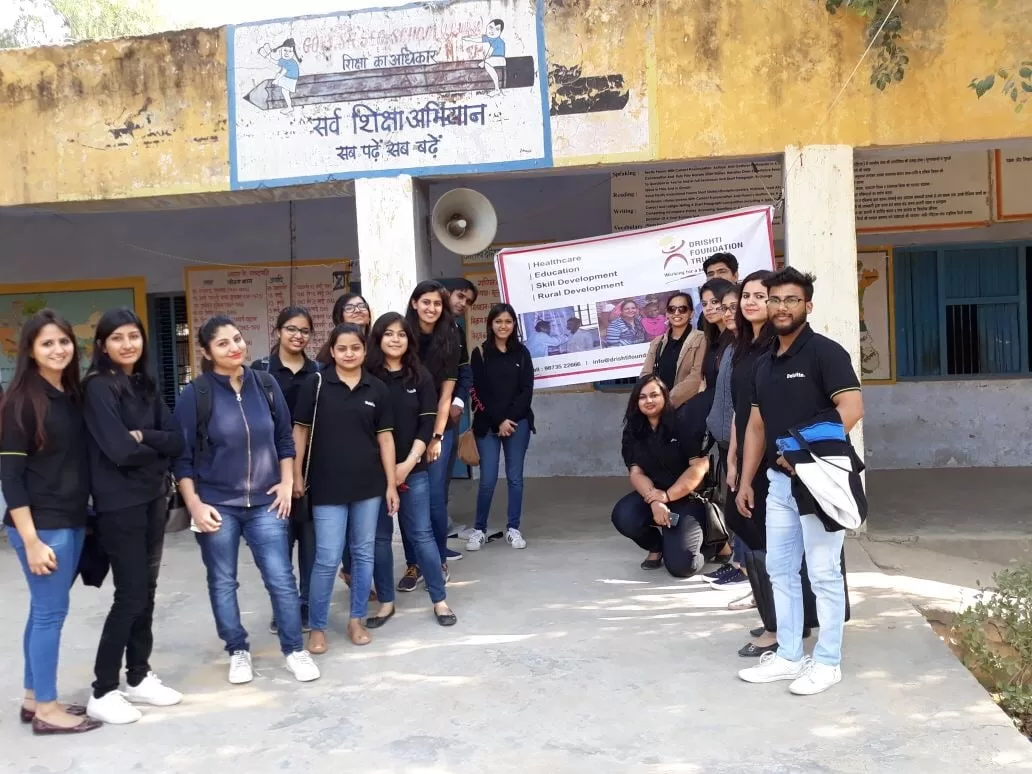“Evaluating Impact: Strategies for Effective Measurement in Non-profit Philanthropy”

As a Not-for-Profit Philanthropy Organization committed to transforming lives in the realms of Health, Education, and Environment, Drishti Foundation Trust stands as a beacon of change and following the SDGs of United Nations. However, in the realm of non-profit work, success isn’t just about the efforts made but also about the impact achieved. But how can we truly measure the difference we make in society? How can we gauge the effectiveness of our initiatives? Here, we delve into the intricate art of measuring impact effectively.
Understanding Impact Measurement
Measuring impact is more than just counting the number of people served or projects initiated under its commitment of SDGs of United Nations. It’s about assessing the tangible and intangible changes that our initiatives bring about in the lives of individuals and communities. It’s about capturing the transformation, be it in health outcomes, educational advancements, or environmental sustainability.
Key Strategies for Effective Impact Measurement
1. Define Clear Objectives and Metrics
Start by defining precise and realistic objectives. Outline the key metrics that align with these objectives. For instance, if the aim is to improve health, metrics could include reduced mortality rates, increased vaccination coverage, or enhanced access to healthcare facilities.
2. Utilize Quantitative and Qualitative Data
Blend quantitative data (numbers, statistics) with qualitative insights (stories, testimonials) to gain a comprehensive understanding. Quantitative data might showcase the number of students enrolled in educational programs, while qualitative data may narrate personal stories of how education has transformed lives.
3. Establish Baselines and Track Progress
Establishing a baseline helps in measuring progress. Collect data before initiating a project or intervention and compare it with data collected at various intervals. This helps in understanding the impact over time.
4. Embrace Technology and Data Analytics
Leverage technology for data collection, management, and analysis. Data analytics tools can help in processing large volumes of information efficiently, providing deeper insights into impact assessment.
5. Stakeholder Engagement and Feedback
Engage stakeholders—beneficiaries, partners, and the community—in the evaluation process. Collect feedback regularly to understand their perspectives and incorporate their suggestions for improvement.
6. Cost-Benefit Analysis
Conducting a cost-benefit analysis aids in understanding the efficiency of programs. It assesses whether the resources invested are justified by the outcomes achieved.
Challenges in Impact Measurement
1. Attribution and Causality
Determining whether the changes observed are a direct result of our interventions or influenced by other factors is often challenging. Establishing causality requires sophisticated methodologies.
2. Long-Term Impact vs. Short-Term Outputs
Balancing short-term outputs (number of individuals served) with long-term impact (sustainable change in living conditions) poses a significant challenge. It’s crucial to focus on both but prioritise long-term impact.
3. Data Quality and Availability
Ensuring the quality and availability of data can be difficult, especially in resource-constrained environments. Investing in robust data collection systems and training staff is crucial.
Our Commitment to Impact Measurement at Drishti Foundation Trust
At Drishti Foundation Trust, we are committed to measuring our impact effectively. We have adopted a comprehensive approach that integrates both qualitative and quantitative methodologies. We conduct rigorous evaluations, engage with stakeholders, and continually refine our strategies to maximise positive change of SDGs of United Nations in society.
UN’s ECOSOC Special Consultative Status and Impact Measurement
Our Special Consultative Status with the Economic and Social Council (ECOSOC) of the United Nations aligns with our commitment to transparency, accountability, and impact measurement. It enables us to participate in United Natiosn deliberations, share our expertise, and learn from global best practices in impact measurement.
Conclusion
Measuring impact effectively is not an easy task, but it’s pivotal for non-profits like ours to assess our efficacy, learn from our successes and failures, and continuously improve. By adopting robust strategies, engaging stakeholders, and leveraging our partnerships, we ensure that our efforts create lasting positive change in the realms of Health, Education, and Environment.
Join us in our journey as we strive to make a meaningful impact and transform lives for a better tomorrow.
This comprehensive blog aims to shed light on the significance of measuring impact for non-profits and provides actionable strategies that can be implemented by organisations like Drishti Foundation Trust.
Contact us to explore collaboration opportunities, learn more about our initiatives, or contribute towards making a difference that truly matters.
Facebook: https://www.facebook.com/DrishtiFoundationTrust/
Instagram : https://www.instagram.com/drishtifoundation
Youtube : https://www.youtube.com/drishtifoundationtrust
Twitter : https://www.twitter.com/dftindia



